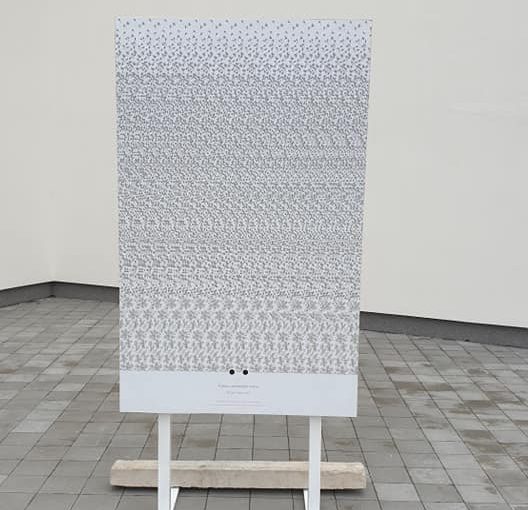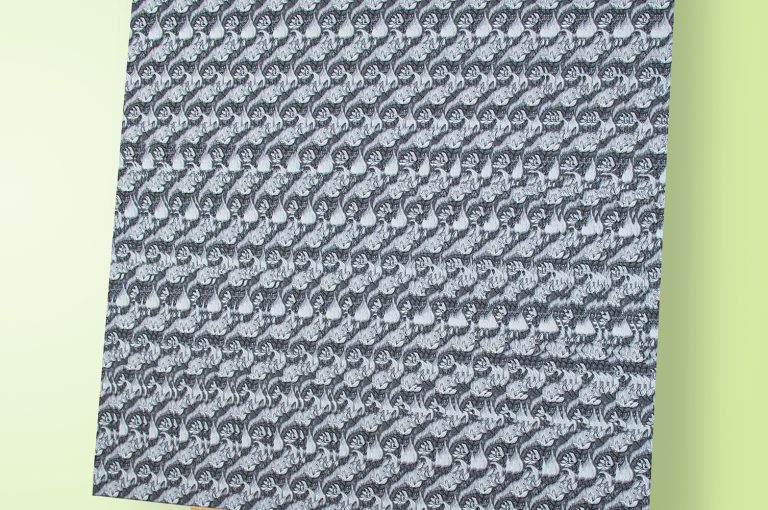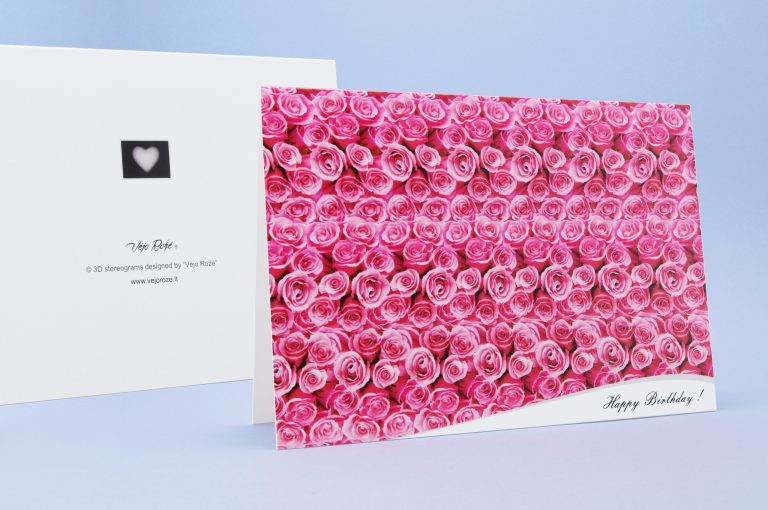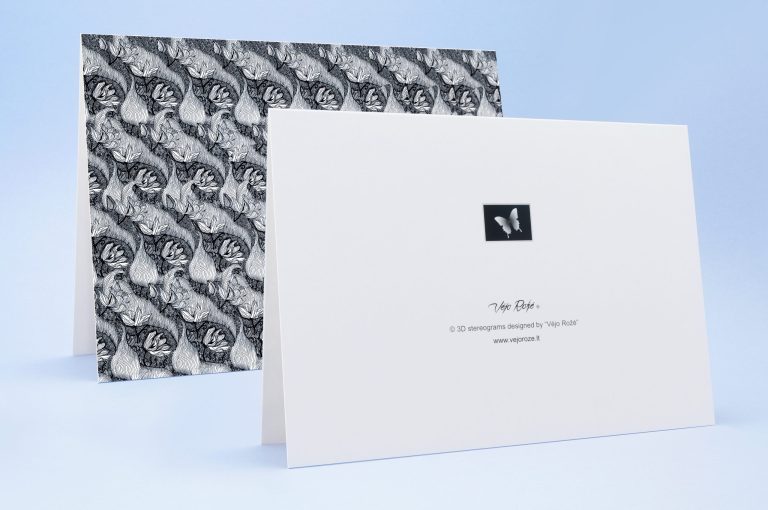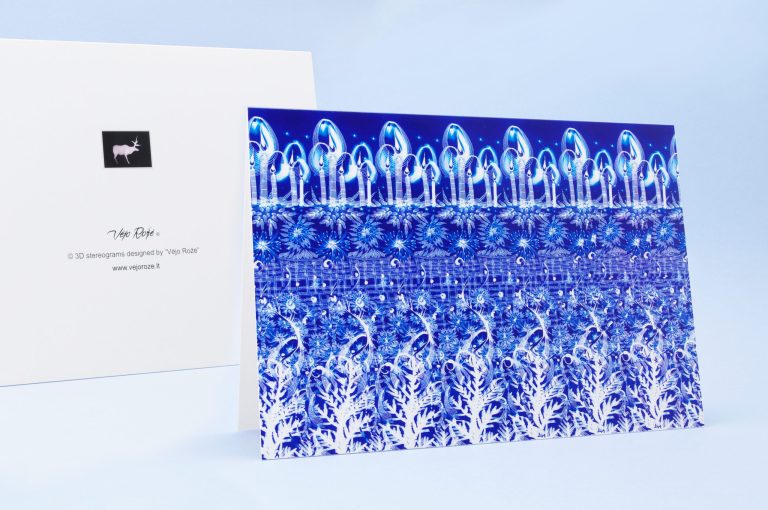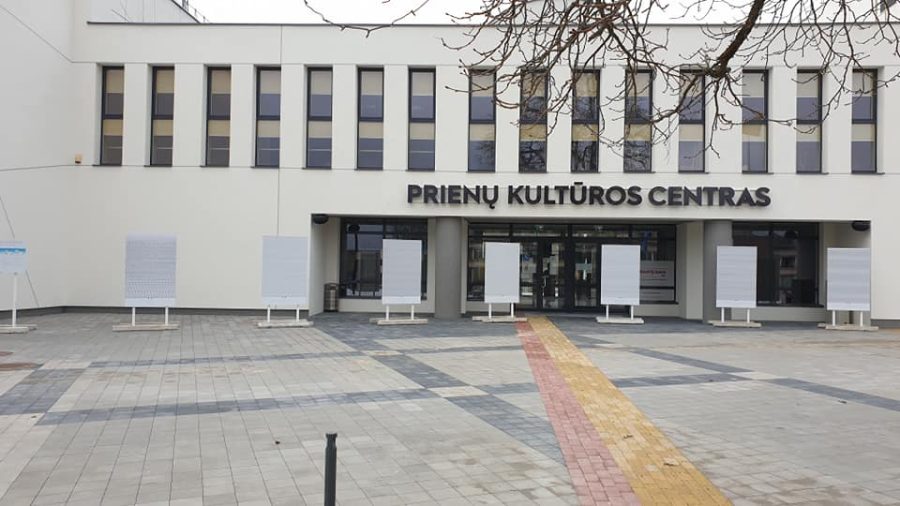Apparently, it’s worth starting from the beginning. Many readers may have heard the word “stereogram” for the first time. We talk to designer Loreta Roževičiūtė-Elksnė about what it means and when it started to be used in global practice.
In 1838, the British scientist Charles Wheatstone published the theory of three-dimensional images. It made it possible to experience the illusion of three-dimensional depth while looking at the picture. This effect was achieved with the invention of the stereoscope. A depth image is called a stereogram.
In 1849-1850, Scotsman David Brewster improved the British inventor’s stereoscope by replacing the mirror with lenses.
In 1959, vision specialist Bela Julesz and psychologist MacArthur Fellow revealed an interesting fact. The three-dimensional image does not appear in the eyes, as was thought, but in the human brain.
…My paintings are scientifically called autostereograms – they do not require any special devices or 3D glasses to see them. It is like a mystical work. At first, we see a small pattern of the picture, and when we look into its depth, a specific spatial object gradually emerges. This effect gives people strong emotions and joy.
Many believe that it is difficult to see a 3D image, but it is not difficult. You just need to look into the distance, as if you were looking through a window.
You are a unique and experienced graphic designer. Why did you choose such an extremely rare field for creative activity? What fascinates you about her?
I got to know these postcards for the first time 25 years ago. When a space motorcycle suddenly appeared before my eyes from a neutral pattern, I was speechless! It became my creative passion and search for new technologies.
I worked as a graphic designer for seventeen years, but when my grandmother unexpectedly healed her eyes with the stereograms I gave her, I knew it worked!
It is clear that stereograms not only provide good emotions, but are also beneficial for health – they strengthen and relax the eyes. It is already used in global practice.
So, eight years ago, I founded a creative group of 3D postcards and paintings, “Vėjo Rožė”.
How can you create a 3D image using graphic painting techniques?
The creative process consists of three stages. First, I create an internal three-dimensional sketch. If it’s a portrait, I work with sculptors. Then a sketch of the pattern is drawn. In the third, longest stage, I bring up the intended 3D image.
I assemble the whole pattern like a mosaic from tiny particles. I do it with different techniques, mostly by hand, and looking into the distance. Some paintings hide the object, in others the visible objects become spatial.
I spend months on a painting. I have graduated in textiles. I am fascinated by fabrics. This long process is like a meditation for me.
It is interesting that 3D pictures are an excellent vision therapy that strengthens eye muscles and vision. What is it based on?
Yes, it is a reliable way to relax the eyes and reduce their fatigue, especially for those who work at the computer for a long time. Our eyes get strained and tired, because when we look at close objects, a monitor, a book, a mobile phone, we don’t have the opportunity to look into the distance. And stereograms are visible precisely when looking into the distance. Then the trained eyes do not feel.
An exhibition of your creative works is now on display at the “Prienų kultūros centre”. Why is the exhibition called such a, I would say mystical, name “True things are not seen by the eyes”?
…A call to Jolanta Šmidtienė, who traditionally creates Christmas trees in Kaunas. I tell her: “I have an idea!”. She knew my work and to my surprise she immediately replied:
“And I have a topic for you.” So, I began to mature the work “The Little Prince” in my heart, which was the theme of the 2019 Kaunas Christmas tree, and the stereogram exhibition became part of this project. This is how the name of the exhibition was born.
Works in large formats (1 m x 1.6 m), there are very few of them in the world.
The wonderful story of Antoine de Saint-Exupéry’s “The Little Prince” seems to come alive in the paintings. What is close to you about this work, the experiences of the Little Prince?
I created the exhibition for almost a year. The Little Prince became like a member of the family. The search for the inner child was the strongest thing I experienced in myself.
The most interesting thing for me was to go with the heroes of the book to the facts of Antoine de Saint-Exupery’s autobiography. The researchers believe that the book mentions the flamboyant but good-hearted famous Rose, his ex-wife Consuelo. And the author himself drew inspiration for the prince’s character and appearance from his youth, when friends and family called him the “Sun King” because of his golden curly hair. Therefore, I chose the texture of wheat in one of the paintings of the exhibition, quoting the famous Fox, for whom golden wheat reminds the hair of a prince…
Thank you, Loreta, for the interesting conversation. We wish you the new creative ideas and their realization. And the readers of the newspaper “Gyvenimas” are invited to visit the “Prienų kultūros centras” and admire the original, warm exhibition “True things are not seen by the eyes”! The exhibition is open throughout the month of March.
How to View?
1. Get as close to the picture as possible. Look through the stereogram without winking or turning your eyes away as if looking through the window.
2. Wait till the picture turns blurry before your eyes and then go back away very slowly.
3. Some parts of the stereogram will start getting closer quite soon while others may seem to move further away from your gaze. Finally, a concrete three-dimensional object will emerge from the depths of the picture. The greater is the distance from the image, the greater is the 3D effect.
Good luck!
Source: newspaper “Gyvenimas”, Veronika Pečkienė, article link The exhibition of three-dimensional pictures has arrived in Prienai!

